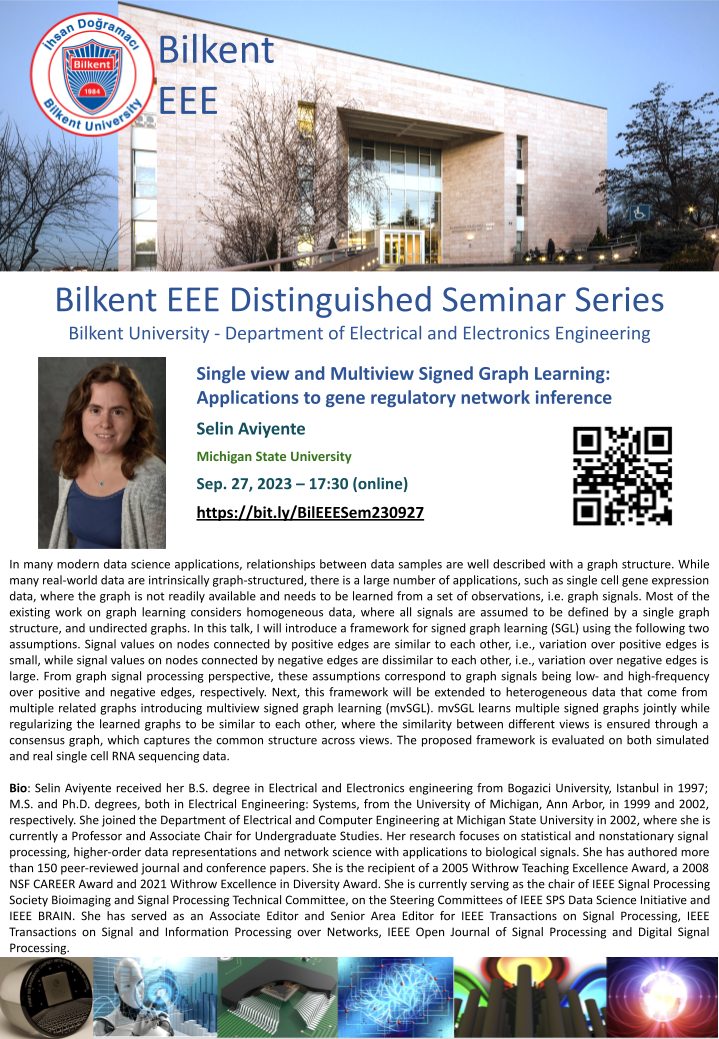
Selin Aviyente
Michigan State University
Date/Time: Sep. 27, 2023 – 17:30 (online)
Single view and Multiview Signed Graph Learning: Applications to gene regulatory network inference
In many modern data science applications, relationships between data samples are well described with a graph structure. While many real-world data are intrinsically graph-structured, there is a large number of applications, such as single cell gene expression data, where the graph is not readily available and needs to be learned from a set of observations, i.e. graph signals. Most of the existing work on graph learning considers homogeneous data, where all signals are assumed to be defined by a single graph structure, and undirected graphs. In this talk, I will introduce a framework for signed graph learning (SGL) using the following two assumptions. Signal values on nodes connected by positive edges are similar to each other, i.e., variation over positive edges is small, while signal values on nodes connected by negative edges are dissimilar to each other, i.e., variation over negative edges is large. From graph signal processing perspective, these assumptions correspond to graph signals being low- and high-frequency over positive and negative edges, respectively. Next, this framework will be extended to heterogeneous data that come from multiple related graphs introducing multiview signed graph learning (mvSGL). mvSGL learns multiple signed graphs jointly while regularizing the learned graphs to be similar to each other, where the similarity between different views is ensured through a consensus graph, which captures the common structure across views. The proposed framework is evaluated on both simulated and real single cell RNA sequencing data.
Bio: Selin Aviyente received her B.S. degree in Electrical and Electronics engineering from Bogazici University, Istanbul in 1997; M.S. and Ph.D. degrees, both in Electrical Engineering: Systems, from the University of Michigan, Ann Arbor, in 1999 and 2002, respectively. She joined the Department of Electrical and Computer Engineering at Michigan State University in 2002, where she is currently a Professor and Associate Chair for Undergraduate Studies. Her research focuses on statistical and nonstationary signal processing, higher-order data representations and network science with applications to biological signals. She has authored more than 150 peer-reviewed journal and conference papers. She is the recipient of a 2005 Withrow Teaching Excellence Award, a 2008 NSF CAREER Award and 2021 Withrow Excellence in Diversity Award. She is currently serving as the chair of IEEE Signal Processing Society Bioimaging and Signal Processing Technical Committee, on the Steering Committees of IEEE SPS Data Science Initiative and IEEE BRAIN. She has served as an Associate Editor and Senior Area Editor for IEEE Transactions on Signal Processing, IEEE Transactions on Signal and Information Processing over Networks, IEEE Open Journal of Signal Processing and Digital Signal Processing.